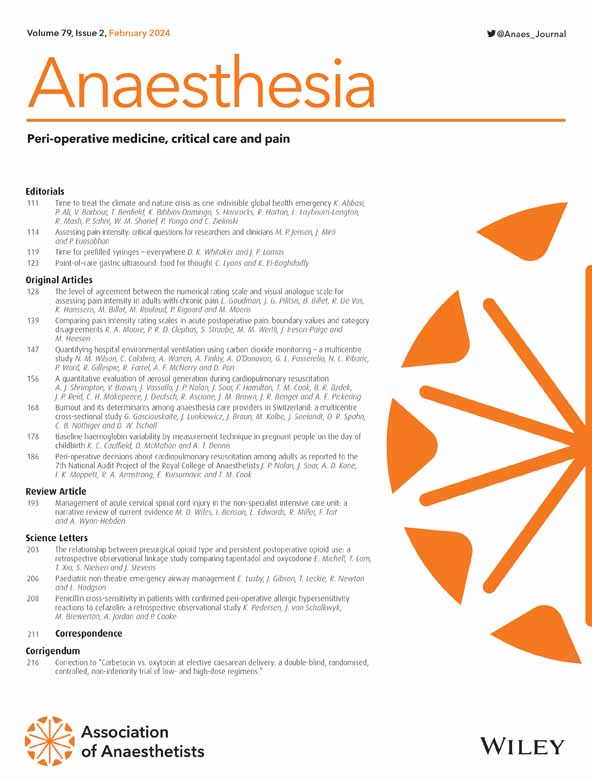Epidemiology, patient outcome and complications after non‐operative management of hip fracture: a systematic review
IF 6.9
1区 医学
Q1 ANESTHESIOLOGY
引用次数: 0
Abstract
SummaryIntroductionSurgery is the preferred treatment for hip fracture in older people. However, a proportion of patients with hip fracture do not receive surgery. There is a lack of contemporary evidence describing this patient population and what their associated outcomes are. We aimed to describe the variation in non‐operative management and its outcomes around the world.MethodsWe performed a systematic review and meta‐analysis of older people presenting to hospital with hip fracture, comparing those with and without surgery for non‐operative proportions, mortality and other outcomes. Risk of bias was assessed using the Newcastle‐Ottawa Scale. We performed a random effects meta‐analysis with adjustment for clustering.ResultsOf 4437 screened studies, 185 were included from 172 separate cohorts, 44 countries, six continents and involving 10,763,994 patients. The overall proportion of non‐operative management was 8.4% (95%CI 7.2–9.7%) with wide within‐country and regional variation. There was no consistent association of non‐operative management proportions with the admission characteristics of sex, fracture type or patient ethnicity. Non‐operative management was associated with a greater relative risk of death at all time points. Risk of bias was generally low except for the expected confounding by indication.DiscussionNon‐operative management of hip fracture is relatively common, but there is wide variation that is unexplained by differences in patient characteristics. The evidence is limited by incomplete reporting of patient characteristics and outcomes, and a lack of controlled studies even in the highest risk populations. Further work is needed to understand this decision‐making process.髋部骨折非手术治疗后的流行病学、患者预后和并发症:一项系统综述
手术是老年人髋部骨折的首选治疗方法。然而,有一部分髋部骨折患者不接受手术治疗。目前缺乏描述这一患者群体及其相关结果的当代证据。我们的目的是描述非手术治疗的差异及其在世界各地的结果。方法:我们对因髋部骨折入院的老年人进行了系统回顾和荟萃分析,比较了接受和未接受手术的老年人的非手术比例、死亡率和其他结果。偏倚风险采用纽卡斯尔-渥太华量表进行评估。我们进行了随机效应meta分析,并对聚类进行了调整。在4437项筛选研究中,185项来自172个独立队列、44个国家、6大洲,涉及10763994名患者。非手术治疗的总体比例为8.4% (95%CI 7.2-9.7%),国家和地区差异很大。非手术治疗比例与性别、骨折类型或患者种族的入院特征没有一致的关联。在所有时间点,非手术治疗与较高的相对死亡风险相关。除了预期的适应症混淆外,偏倚风险一般较低。髋部骨折的非手术治疗相对常见,但由于患者特征的差异,治疗方法存在很大差异。由于对患者特征和结果的报告不完整,甚至在高危人群中也缺乏对照研究,证据受到限制。需要进一步的工作来理解这一决策过程。
本文章由计算机程序翻译,如有差异,请以英文原文为准。
求助全文
约1分钟内获得全文
求助全文
来源期刊

Anaesthesia
医学-麻醉学
CiteScore
21.20
自引率
9.30%
发文量
300
审稿时长
6 months
期刊介绍:
The official journal of the Association of Anaesthetists is Anaesthesia. It is a comprehensive international publication that covers a wide range of topics. The journal focuses on general and regional anaesthesia, as well as intensive care and pain therapy. It includes original articles that have undergone peer review, covering all aspects of these fields, including research on equipment.
 求助内容:
求助内容: 应助结果提醒方式:
应助结果提醒方式:


